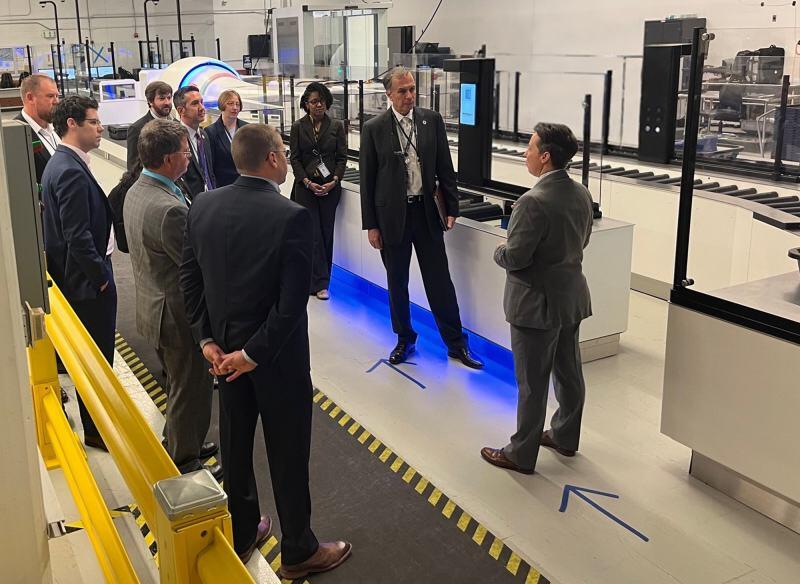If your travels will take you through Harry Reid International Airport (KLAS) in Las Vegas next month, be prepared to screen yourself as you pass through security checkpoints. According to a media release from Homeland Security, the Transportation Security Administration (TSA) will be testing a new self-service screen system at the airport starting in January.
According to the Department of Homeland Security, in order to address the increase in passenger air travel the science and technology directorate (S&T) is focusing on sustainable changes to systems to increase screening efficiency, and one means of doing that is the “Screening at Speed Program”, which allows TSA PreCheck passengers to complete the screening process with minimal to no assistance from Transportation Security Officers.
“Like self-ordering kiosks at fast food and sit-down restaurants, self-service screening allows passengers in the Trusted Traveler Program to complete the security screening process on their own,” said Screening at Speed Program manager Dr. John Fortune. “Travelers will use passenger and carry-on screening systems at individual consoles or screening lanes themselves, reducing the number of pat-downs and bag inspections [transportation security officers (TSOs)] need to perform and freeing their time to be reallocated to the busier aspects of screening operations. The feedback we’ve already received during testing from both mock passengers and TSOs has been incredibly positive.”
The Screening at Speed team and the TSA laboratory are experimenting with different methods to increase security effectiveness, reduce checkpoint wait times, and minimize passenger and TSO contact, “reducing the number of bags TSOs have to pick up and move around and allowing passengers to proceed at their own pace,” according to Fortune.
The Hardware
In late 2021, S&T awarded four contracts to three companies: Micro-X of Federal Way, Washington; Vanderlande Industries Inc. of Marietta, Georgia; and Voxel Radar of San Francisco. The concepts proposed ranged from pod-based designs with screening consoles like self-checkout stations to wall-mounted panels.
Micro-X is developing a pod-based design for passengers consisting of a compact carry-on screening system and a flat-panel passenger screening capability. The system provides feedback to the passenger if additional screening is needed, and the company is developing a small computed tomography (CT) X-ray system for a compact carry-on and personal item self-screening solution.
Voxel Radar is developing in-motion panel sensors to line walls or curved surfaces, which it says will allow passengers to be screened in near real time.
Vanderlande’s prototype, the PAX MX2, combines the company’s automated screening lane carry-on bag conveyance system with new and existing transportation security equipment to create four integrated stations for one checkpoint lane. Each station includes a video monitor with multistep instructions and a help button that connects to a live TSO for assistance as needed, along with automated entry and exit doors. If a passenger doesn’t pass initial screening due to an item left in their pocket or similar issue, the entry door reopens so passengers can remove items before being rescreened. The passenger needs to pass screening before the exit door opens allowing them to leave.
Homeland Security notes these systems are being tested at various facilities around the United States, including Ronald Reagan Washington National Airport (KDCA) and Atlantic City International Airport (KACY) in New Jersey.
However, the big test will be in Las Vegas next month as the city will host the Consumer Electronics Show and many of the visitors to the convention are expected to pass through KLAS.
